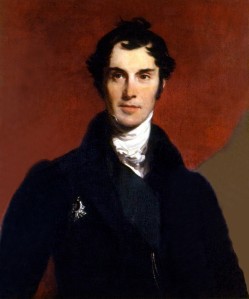 “He loved me and I loved him… A true, intimate, and I would even say tender friendship, if one could say such between men.” This testimony to his second dearest friend, the first being Victor de Broglie, was repeated frequently by Guizot in December 1860, the day after the death of Lord Aberdeen. The feeling that it inspired can indeed be called love. This could in no way have been foreseen between them and the circumstances in which it grew and flourished were hardly favourable.
“He loved me and I loved him… A true, intimate, and I would even say tender friendship, if one could say such between men.” This testimony to his second dearest friend, the first being Victor de Broglie, was repeated frequently by Guizot in December 1860, the day after the death of Lord Aberdeen. The feeling that it inspired can indeed be called love. This could in no way have been foreseen between them and the circumstances in which it grew and flourished were hardly favourable.
George Hamilton Gordon was born in 1784 and came from an old and prestigious Scottish lineage. He became the 4th Earl of Aberdeen in 1801 and was already a well-known figure when Guizot embarked on his career. He had taken part in the Treaty of Paris negotiations in 1814 and was Foreign Secretary from 1828 to 1830. In this role, he was the first Foreign Minister in Europe to recognise Louis-Philippe. Guizot heard of him on a more intimate level when he began his liaison with Princess von Lieven. Aberdeen was also more than attracted to the Princess, who was an influential and charismatic figure in the Russian Embassy in London and in all political and diplomatic circles, and he made a point of intimating this to her one day in July 1837. But she had recently become very attached to Guizot, to whom she said: “I told him so, he now knows that I am not alone on this earth and that a noble heart has agreed to console my own.” The none-less noble Lord received this admission like a true gentleman and showing no signs of his distress, stepped down in the face of his French rival, not without declaring: “The man I am most curious about in Paris is M. Guizot. Promise me that you will introduce me to him.”
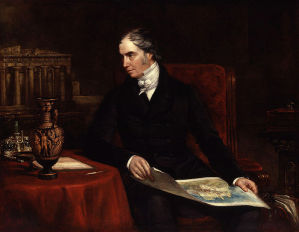 Their real encounter took place in March 1840 when Guizot became French Ambassador in London. Aberdeen, a very open-minded Tory, was then in the opposition: “He is very learned and his conversation extremely varied”. Their mutual confidence increased progressively, as far as was possible given his position as Ambassador. Aberdeen wrote to Mme von Lieven, who had remained a close friend: “His traits of character that impress me most are his honesty and his integrity.” Guizot also recognised these qualities in he who would become his counterpart in the Foreign Ministry in 1841. Perhaps unconsciously, they were also linked by their own personal dramas. Aberdeen had lost his father at the age of seven, his first wife and then successively their four children, and finally his second wife in 1833. They shared the same Protestant background for Aberdeen, a Scotsman, was a Presbyterian. It was only in temperament that they greatly differed: one a southern bourgeois, lively, talkative, continually in action, and the other of noble descent, a rich landowner, slow, silent, phlegmatic, with a fiery temperament burning under an icy exterior that Guizot endeavoured and succeeded in breaking through.
Their real encounter took place in March 1840 when Guizot became French Ambassador in London. Aberdeen, a very open-minded Tory, was then in the opposition: “He is very learned and his conversation extremely varied”. Their mutual confidence increased progressively, as far as was possible given his position as Ambassador. Aberdeen wrote to Mme von Lieven, who had remained a close friend: “His traits of character that impress me most are his honesty and his integrity.” Guizot also recognised these qualities in he who would become his counterpart in the Foreign Ministry in 1841. Perhaps unconsciously, they were also linked by their own personal dramas. Aberdeen had lost his father at the age of seven, his first wife and then successively their four children, and finally his second wife in 1833. They shared the same Protestant background for Aberdeen, a Scotsman, was a Presbyterian. It was only in temperament that they greatly differed: one a southern bourgeois, lively, talkative, continually in action, and the other of noble descent, a rich landowner, slow, silent, phlegmatic, with a fiery temperament burning under an icy exterior that Guizot endeavoured and succeeded in breaking through.
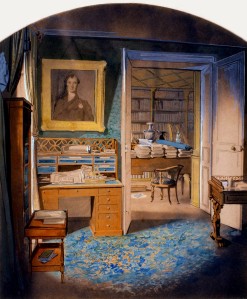
Above Guizot's desk, one can see the copy by Henry Landseer of a painting by Thomas Lawrence representing Lord Aberdeen.
Foreign policy, which ought to have separated them, was in fact the catalyst of their friendship. This was established permanently in September 1843, when the British sovereigns came to visit the King and Queen of France in Eu. Guizot and Aberdeen had many meetings together, conversing in a language that is hard to conceive, as one did not speak perfect English and the other hardly any French. These meetings resulted in the establishment of a “cordial good understanding”, as Aberdeen wrote, a “sincere friendship” in a spirit of “cordiale entente” replied Louis-Philippe inspired by Guizot, between the two countries. This understanding was sorely tried as the interests of the two governments were often conflicting: rivalry over Greece, Right of Search, Tahiti and the Pritchard affair, intervention in Morocco and finally the most serious of all, the Spanish marriages. 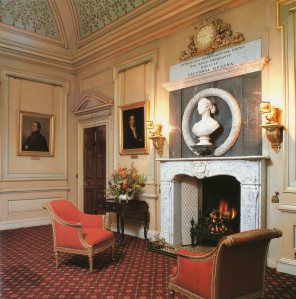 Despite some very tense situations, a compromise was found for each of these situations until Aberdeen left the Foreign Office in July 1846. Apart from the meetings in Eu in September 1843, in Windsor in October 1844 and again in Eu in September 1845 between the Sovereigns and their ministers – “In the park, a tête à tête with Lord Aberdeen. Very, very good walk, affectionate, trusting and sensible… We talked about everything”, the two colleagues had a most unusual modus operandi. From the autumn of 1843 onwards, alongside the official letters and documents, they kept up a private correspondence where the principal was “to tell one another everything” quite frankly and trustingly, including sending one another diplomatic papers that their respective ambassadors wished to keep secret. They thus avoided the sensitivities, false interpretations and pressures of public opinion to the benefit of mutual understanding and a desire for peace that did not exclude defending the interests of each nation. This “true, good and sensible” policy earned them the qualification “Englishman bâtard” for one and “valet de Guizot” for the other by their respective opposition parties, but this stratagem bore its fruit. The correspondence also illustrates how their friendship developed, expressed particularly by Guizot, where the salutations went from a simple “yours sincerely” at the outset to “all my very best to you” then “all my very best from the bottom of my heart”, or even “from the very depths of my soul” in July 1846, which is a lot from one minister to another. Aberdeen, in a more sober vein, signed off with an almost unchanging “believe me ever most truly yours”. In 1847 they exchanged their portraits, always hung in a prominent position in their respective houses.
Despite some very tense situations, a compromise was found for each of these situations until Aberdeen left the Foreign Office in July 1846. Apart from the meetings in Eu in September 1843, in Windsor in October 1844 and again in Eu in September 1845 between the Sovereigns and their ministers – “In the park, a tête à tête with Lord Aberdeen. Very, very good walk, affectionate, trusting and sensible… We talked about everything”, the two colleagues had a most unusual modus operandi. From the autumn of 1843 onwards, alongside the official letters and documents, they kept up a private correspondence where the principal was “to tell one another everything” quite frankly and trustingly, including sending one another diplomatic papers that their respective ambassadors wished to keep secret. They thus avoided the sensitivities, false interpretations and pressures of public opinion to the benefit of mutual understanding and a desire for peace that did not exclude defending the interests of each nation. This “true, good and sensible” policy earned them the qualification “Englishman bâtard” for one and “valet de Guizot” for the other by their respective opposition parties, but this stratagem bore its fruit. The correspondence also illustrates how their friendship developed, expressed particularly by Guizot, where the salutations went from a simple “yours sincerely” at the outset to “all my very best to you” then “all my very best from the bottom of my heart”, or even “from the very depths of my soul” in July 1846, which is a lot from one minister to another. Aberdeen, in a more sober vein, signed off with an almost unchanging “believe me ever most truly yours”. In 1847 they exchanged their portraits, always hung in a prominent position in their respective houses.
Aberdeen’s departure and Guizot’s fall from favour did nothing to cool their mutual affection, on the contrary. When Aberdeen learnt that his friend had been arrested in February 1848, he apparently almost passed out. Guizot’s period of exile in London enabled them to have some very amicable meetings and as he was about to return to France, he wrote to Aberdeen: “I do not know whether I have told you enough how touched I am by your friendship and how deep mine is for you. 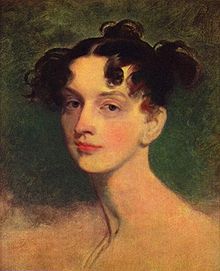 I am sure that I have not told you the extent of it”. He entrusted Aberdeen with the treasures that were dearest to him – his medals, including the “Toison d’Or” and letters, including those from the Princess von Lieven. He only recovered this precious box in 1857. Out of political affairs, except when Aberdeen returned in December 1852 as head of a cabinet which came to a rather unfortunate end in February 1855, the exchanges between the two men continued through a substantial correspondence, especially when the former Foreign Secretary was at one point involved, with Guizot and others, in trying to bring about the impossible alliance between the Bourbons and the house of Orléans. Aberdeen paid a few rare visits to Paris and never went to Val-Richer, where the youngest of his four sons, Arthur Gordon, was warmly welcomed. In August 1858, Guizot decided to travel as far as Scotland to see his old friend in Haddo House.
I am sure that I have not told you the extent of it”. He entrusted Aberdeen with the treasures that were dearest to him – his medals, including the “Toison d’Or” and letters, including those from the Princess von Lieven. He only recovered this precious box in 1857. Out of political affairs, except when Aberdeen returned in December 1852 as head of a cabinet which came to a rather unfortunate end in February 1855, the exchanges between the two men continued through a substantial correspondence, especially when the former Foreign Secretary was at one point involved, with Guizot and others, in trying to bring about the impossible alliance between the Bourbons and the house of Orléans. Aberdeen paid a few rare visits to Paris and never went to Val-Richer, where the youngest of his four sons, Arthur Gordon, was warmly welcomed. In August 1858, Guizot decided to travel as far as Scotland to see his old friend in Haddo House.
This journey was to be their last encounter. In the beautiful park, the two men from another era conversed together, walking or sitting on a bench. Guizot saw with his own eyes this aristocracy that was still alive and not very different from the tales of Walter Scott: “ There are more than 900 farmers. He is the last of the great Scottish lairds who could call on some 3 to 4000 men… It is impossible to demonstrate more intelligence and sensitivity in a manner that is slow, cold and sometimes rather self-conscious, sometimes slightly ironical.” The two friends parted in a beautiful scene from another age.
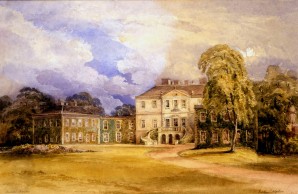
Aberdeen, the patriarch, surrounded by his loved-ones, clasped Guizot’s hand with these words: “We shall not see one another again, but I shall never forget that you came so far for me.” And the other remarked: “I would go far further to see him again”.
He left, taking with him a water-colour of Haddo House painted for him by Aberdeen’s daughter-in-law, that he immediately placed in Val-Richer.
Guizot’s last letter to Aberdeen is dated October 11, 1860. In July, he had again written to him: “Apart from your close family, there is no-one who thinks of you more often and with more affection than myself.” Contrary to Guizot’s other very dear friends, Guizot did not write a portrait of Aberdeen. But his correspondence is full of references to him; “As cunning-looking as an Englishman, as tender as a woman… All the qualities of his nation without their shortcomings. Proud and modest.” “He really had the most English character and the most European mind of all the people I have met in his country. Although as conservative as any of his contemporaries, he was the most liberal of all.” Is there an element of self-portrait in this?